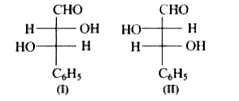Consider the following intermediates formed during Krebs cycle
1. α-ketoglutarate 2. lsocitrate
3. Succinate 4. Malate
5. Fumerates
The correct sequences in which the above intermediates are formed is -
1, 2, 4, 3, 5
2, 1, 5, 4, 3
3, 1, 2, 5, 4
2,1,3, 5,4
The correct Answer is:D
To determine the correct sequence in which the intermediates are formed during the Krebs cycle, we can follow the steps outlined below:
1. Understand the Krebs Cycle: The Krebs cycle, also known as the citric acid cycle or tricarboxylic acid cycle, is a series of chemical reactions used by all aerobic organisms to generate energy. It occurs after glycolysis and involves several intermediates.
2. Identify the Starting Point: The cycle begins with the combination of acetyl-CoA (derived from pyruvate) and oxaloacetate, forming citrate. However, oxaloacetate is not listed in the options provided.
3. List the Given Intermediates: The intermediates provided in the question are:
- Alpha-ketoglutarate
- Isocitrate
- Succinate
- Malate
- Fumarate
4. Determine the Order of Formation:
- Citrate Formation: After the initial reaction, citrate is formed (not listed).
- Isocitrate Formation: Citrate is then converted to isocitrate. So, isocitrate is the first intermediate we will consider.
- Alpha-Ketoglutarate Formation: Isocitrate is then converted to alpha-ketoglutarate.
- Succinate Formation: Alpha-ketoglutarate is converted to succinyl-CoA, which is then converted to succinate.
- Fumarate Formation: Succinate is converted to fumarate.
- Malate Formation: Fumarate is then converted to malate.
5. Final Sequence: Based on the above conversions, the correct sequence of intermediates formed is:
- Isocitrate (2)
- Alpha-ketoglutarate (1)
- Succinate (3)
- Fumarate (5)
- Malate (4)
Thus, the correct order of intermediates is 2, 1, 3, 5, 4.
Final Answer:
The correct sequence in which the intermediates are formed during the Krebs cycle is 2, 1, 3, 5, 4.
---
- Alpha-ketoglutarate
- Isocitrate
- Succinate
- Malate
- Fumarate
- Citrate Formation: After the initial reaction, citrate is formed (not listed).
- Isocitrate Formation: Citrate is then converted to isocitrate. So, isocitrate is the first intermediate we will consider.
- Alpha-Ketoglutarate Formation: Isocitrate is then converted to alpha-ketoglutarate.
- Succinate Formation: Alpha-ketoglutarate is converted to succinyl-CoA, which is then converted to succinate.
- Fumarate Formation: Succinate is converted to fumarate.
- Malate Formation: Fumarate is then converted to malate.
- Isocitrate (2)
- Alpha-ketoglutarate (1)
- Succinate (3)
- Fumarate (5)
- Malate (4)
The correct sequence in which the intermediates are formed during the Krebs cycle is 2, 1, 3, 5, 4.
Topper's Solved these Questions
Similar Questions
Which of the following is the only 5-carbon compound formed during Krebs cycle
View SolutionConsider the following
1. Succinic dehydrogenase
2. Aconitase
3. α-ketoglutarate dehydrogenase
4. lsocitric dehydrogenase
What is the correct order in which the above enzymes catalyze the reaction in Kreb's cycle?
View SolutionThe correct sequence of four carbon acids formed during Krebs cycle is
View SolutionConsider the following compounds:-
1. Phosphoenol pyruvate-
2. Malic acid-
3. Pyruvic acid-
4. Oxaloacetic acid-
What is the correct sequence of these intermediate compounds as they form in C4 dicarboxylic acid pathway flowing the PEP-carboxylation reaction?
View SolutionConsider the following statements
A marathon runner is likely to show
1. Reduced heart rate
2. Enlarged heart
3. larger stroke volume
4. Decreased arterial blood pressure
Which of the above statement is/are correct?
View SolutionConsider the following stages
1. Spermogonial 2. Aecial
3. Uredial 4. Telial
5. Basidial
The correct sequene of these stages in the life-cycle of Puccinia graminis tritici is
View SolutionConsider the following:
1. Succinate 2. Succinyl CoA
3. NADH+H+ 4. CO2
When α-ketoglutarate dehydrogenase enzyme acts on α-ketoglutarate, which of the above are produced?
View SolutionConsider the following fatty acids
1. Linolenic 2.Epimers
3. Aldohexoses 4. Monosaccharides.
which of the above statements are correct ?
View SolutionConsider the following pairs of compounds :

Which among the following statements is correct?
1. Both are enantiomers
2. Both are in threo form
3. Both are diastereomers
4. Both are in erythro form
View SolutionDescribe the following set in set builder form: A={1,2,3,4,5,6}
View Solution
